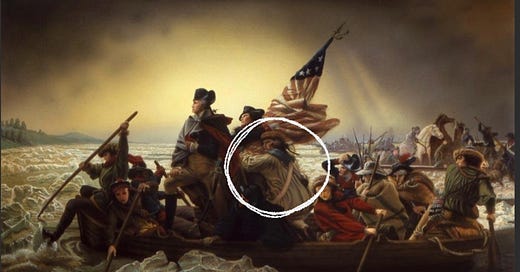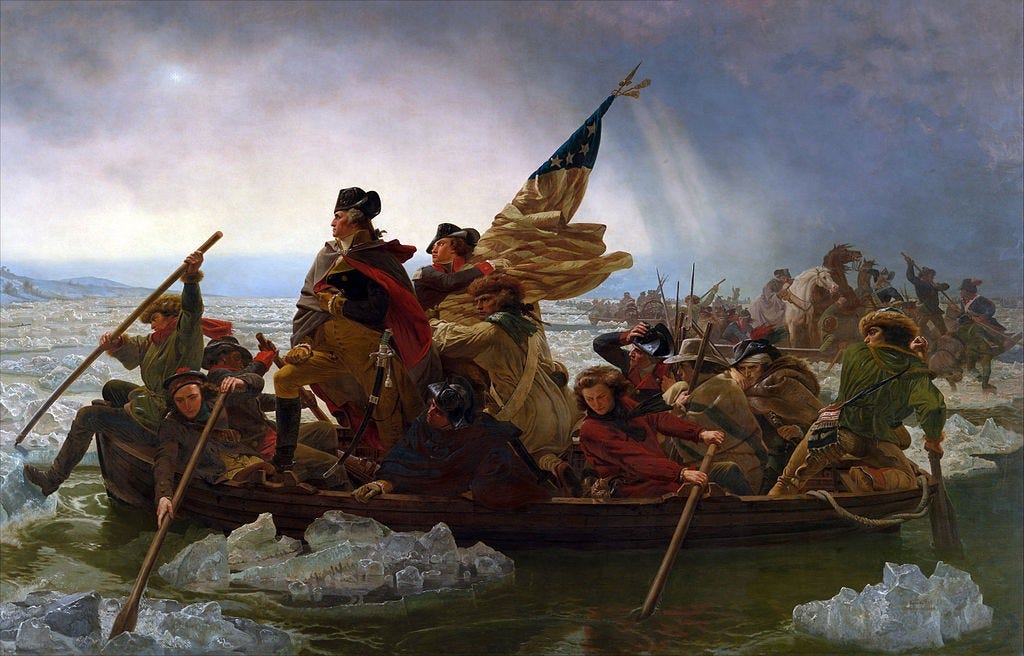William "Billy" Lee— Erased From History
Part 3 of a miniseries on historical figures who have been "erased from history"
WILLIAM “BILLY” LEE (1750-1810) —THE MOST FAMOUS SLAVE IN AMERICA
In 1768, George Washington purchased Billy and Frank Lee to work at his home in Mount Vernon, Virginia. America’s premier commander-in-chief paid just over sixty British pounds for the two brothers. Quickly, Billy became Washington’s right hand man—serving as his valet, personal servant, and hunting partner. In time, he also became Washington’s closest ally.
Washington was an extremely paranoid man. The inaugural president was a heavy consumer of laudanum—a rich concoction of alcohol and opium. He became haunted by his experiences on the battlefield, constant political hostility, and his own moral entrapments. As the war for independence waged on, Washington’s utilitarian views began to shift. His desire to retain ownership over his slave population, a group greater than 200, directly contradicted the exact thing he fought for. Washington’s relationship with Lee, who spent more time with the first president than anyone else in recorded history, likely further agitated the turmoil that lay beneath his powdered wig.

Washington showed obvious favoritism towards Lee. In his writings, he referred to Lee as “my servant” or “my aide,” but never as “my slave.” At their home in Mount Vernon, Billy was the only slave allowed to keep their family name—a clear sign of his elevated status. After the war, Lee was authorized to have Margaret Thomas, a young seamstress whom he had in Philadelphia, come and live at Mount Vernon. Lee was the only man personally set free in Washington’s final will, and began receiving a pension of $30 from Washington’s estate.
During the war, Lee made sure the commander’s uniform was always laid out, pressed, and ready to go. For eight long years, the two shared a tent together every night. In the mornings, Lee brushed Washington's hair and tied a bow in it. Lee became a regular celebrity among camp. To those around them, it was clear that the duo shared a special relationship.
“Witnesses reported they (Washington and Lee) communicated with silent nods and head movements requiring no words.”
-Joseph J. Ellis, (The Cause, p.460)

During battle, Lee was tasked with carrying Washington's most important papers, his maps, and his mahogany spyglass. After surviving Valley Forge, where 1,700 men died over a six-month period, Lee witnessed victories at Monmouth, Trenton, and Princeton. He was there when Washington crossed the Delaware and he was there when the Brits surrendered at Yorktown.
After the war, Lee badly injured his knees and succumbed to alcoholism. He spent his final years living as a free man at Mount Vernon. Lee’s burial site is not clearly marked, and his legacy is mostly forgotten. Of the nine presidents who owned slaves, Washington was the only one who set free all of the men, women, and children who worked for him.

SOURCES
The Cause: The American Revolution and Its Discontents—Joseph J. Ellis
George Washington Teeth from Enslaved People—via mountvernon.org




